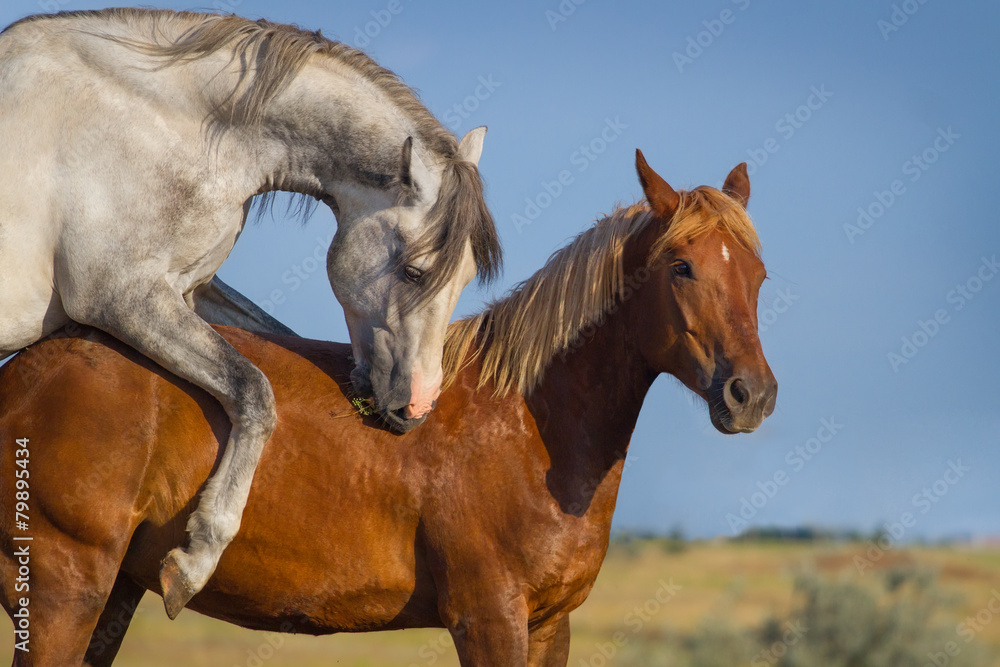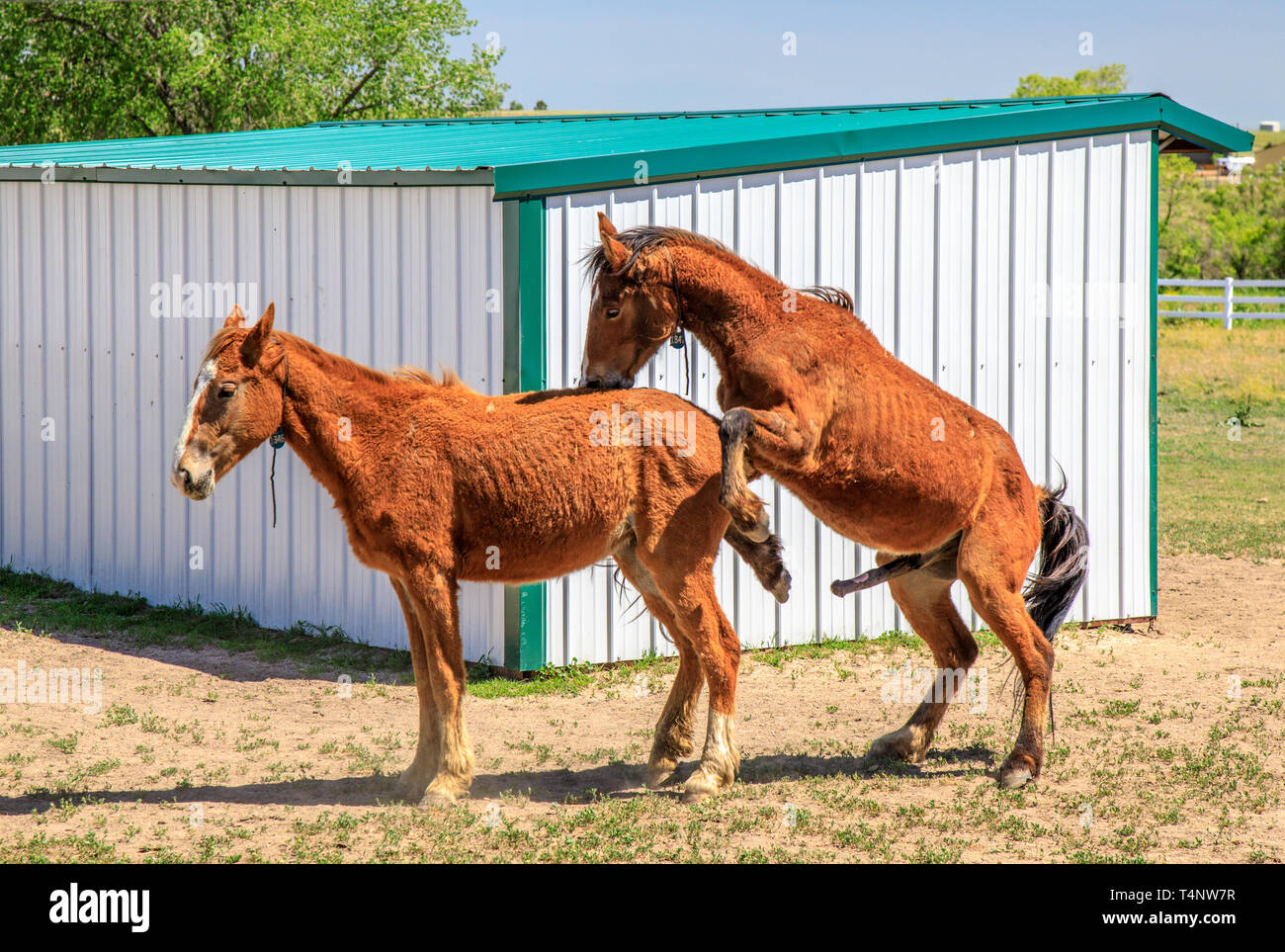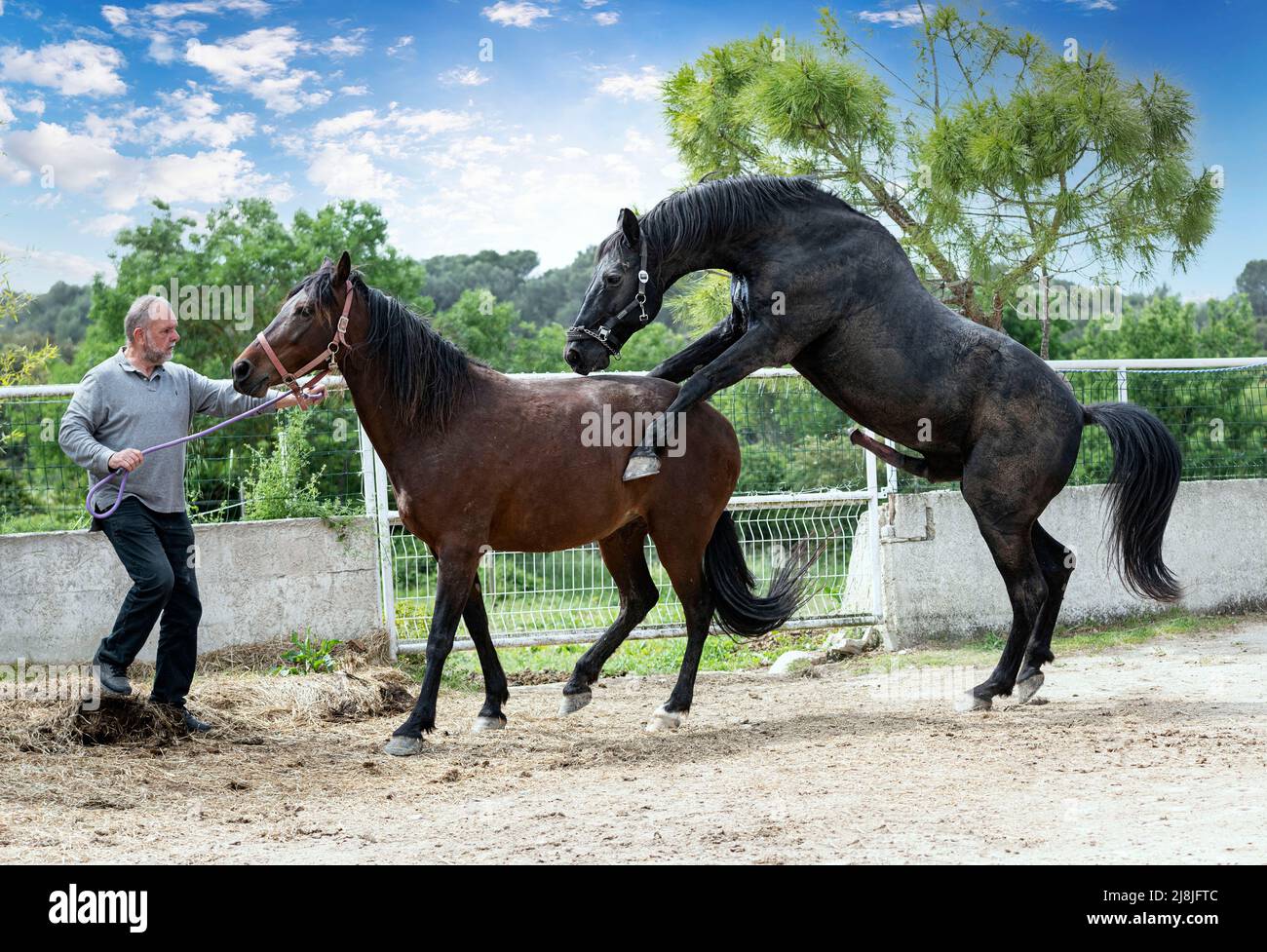Exploring Horse Mating: Natural Behaviors & Breeding Insights
Is the age-old practice of gelding a necessary evil, or can we forge a path toward more natural horse management? The complexities of balancing stallion ownership with the welfare of mares, and the pursuit of natural breeding practices, demand careful consideration and a deep understanding of equine behavior.
The journey toward natural horse keeping often leads to difficult questions, particularly concerning gelding. The decision isn't made lightly; it involves weighing the practicalities of managing a stallion, the potential for continuous breeding cycles in mares, and the ultimate goal of prioritizing the well-being of every horse involved. As with all animal species, horse mating is essential for maintaining a healthy population.
Horse mating, a fundamental biological process, typically commences once both the mare and stallion reach sexual maturity, usually around three or four years of age. While mares may be able to conceive as young as two years old, this is generally not recommended due to the potential strain on their developing bodies. Natural mating, as it unfolds in the absence of human intervention, does not always result in a successful pregnancy. There are various factors that influence the probability of conception, including the health and fertility of both the mare and stallion, the timing of the breeding, and the environmental conditions. The anatomy and mechanics involved in horse mating can result in injuries to the mare. Bruising is a common occurrence, and minor genital injuries can also happen. More severe trauma, such as a vaginal rupture, though rare, poses a life-threatening risk.
| Aspect | Details |
|---|---|
| Breeding Method | Natural service, also known as live cover, is a common approach in the horse industry. This method involves the physical mating of a stallion and mare. |
| Cost | Natural service tends to be less expensive than artificial insemination. |
| Personnel Involvement | It generally requires fewer personnel than artificial insemination. |
| Maturity | Mating typically begins when both mare and stallion reach sexual maturity, around 3-4 years old. |
| Mating Season | Wild horse populations often have a distinct breeding season. |
| Domestic Breeding | Domestic horse breeding often involves controlled mating to achieve specific traits or conform to breed standards. |
| Courtship | Horses engage in a natural courtship process, often led by instinct. |
| Stallion Behavior | The stallion approaches the mare, sniffing and nuzzling. |
| Mare Readiness | A receptive mare signals readiness by standing still and lifting her tail. |
| Mating Position | The stallion must mount the mare from behind for mating to occur. |
| Mating Phases | Horse mating in the wild and natural pasture mating is characterized by three distinct phases. |
| Injuries | Natural mating can sometimes result in bruising or minor genital injuries to the mare. |
| Serious Risk | A vaginal rupture could result in death. |
| Hormonal Influence | Understanding the hormonal influence is crucial in understanding the breeding cycle. |
| Management | Breeding horses naturally requires careful management to ensure successful outcomes. |
| Instincts | Natural breeding behaviors are led by their instinct. |
| Ratio | What is the ideal mating ratio or stallion to mare ratio under natural breeding method? |
| Video Reference | Link to Video (Replace EXAMPLE_VIDEO_ID with a relevant YouTube video ID. If you cannot find a video, remove this link.) |
Domestic horse breeding is often far more structured and planned. It may involve controlled mating to cultivate desired characteristics or uphold breed standards. The realities of breeding extend beyond simply putting a stallion and a mare together. This involves in-depth learning about courtship behaviors, artificial insemination techniques, and the hurdles breeders face in shaping the next generation of equine champions. The term "natural" may imply an ideal, but real-world breeding presents its own challenges and considerations.
Witnessing unrestrained breeding offers a different perspective. It's a process that is "tender, rough, playful, but always consensual." This approach offers valuable insights into the natural instincts that drive equine reproduction. The mating process in horses is a natural and fascinating biological process that plays a fundamental role in their reproduction. Understanding the different aspects of horse mating, including the hormonal influence, the mating ritual, and the factors affecting its success, can provide valuable insights into horse behavior and breeding practices.
Finn, approaching his second year, provides an opportunity to refine the experience of owning a stallion. Horses exhibit a range of behaviors before, during, and after mating, all of which contribute to the complex dynamics of equine reproduction. The stallion approaches the mare, often exhibiting behaviors such as sniffing and nuzzling. If the mare is receptive, she will signal this readiness by standing still and lifting her tail. The stallion must mount the mare from behind for mating to occur, following their natural instincts.
The horse is often referred to as the "king" during mating, a reflection of the inherent power and energy involved in this vital process. Mating season is a period when animals, including horses, demonstrate their reproductive drive with renewed vigor. Understanding these behaviors not only reveals the intricacies of successful horse mating but also illuminates the natural instincts that dictate equine reproduction.
The process of horse mating is a delicate one, requiring careful management and a deep understanding of equine anatomy, breeding cycles, and various breeding practices. From understanding natural mating rituals and breeding techniques to navigating the foaling process, breeders and horse enthusiasts must delve into the intricacies of these magnificent animals. The role of stallions and mares is critical in horse breeding, ensuring the perpetuation of equine life.
The ideal mating ratio or stallion-to-mare ratio under natural breeding methods is an important question for breeders seeking to work with nature. Natural horse mating provides a view into the behaviors and instinctual processes that govern the perpetuation of the equine species. The success of horse mating relies on effective management to ensure the desired results, highlighting the complexity and importance of natural breeding practices.
Understanding the nuances of equine reproductive anatomy, the intricacies of the breeding cycle, and the various horse breeding methods is essential for breeders and horse enthusiasts. Careful observation of these behaviours can provide insights into the natural instincts that guide equine reproduction.
Horse mating, a natural process vital for reproduction, involves several stages and behaviors that facilitate the transfer of sperm. This, in turn, leads to fertilization and the development of offspring. In the absence of human intervention, the process of natural, unrestrained breeding can be both fascinating and educational. It emphasizes the inherent skills that guide equine reproduction. Natural pasture mating is typically defined by three distinct phases, each contributing to the overall process. Breeding horses naturally requires meticulous management to ensure favorable outcomes.



Detail Author:
- Name : Eva Stehr
- Email : quinten65@leuschke.com
- Birthdate : 1972-07-20
- Address : 470 Linwood Pass Suite 573 Dachtown, IN 53622-8539
- Phone : (412) 828-7745
- Company : Ratke-Lang
- Job : Insurance Sales Agent
- Bio : Officia ipsa aliquam maxime corporis qui. Odio soluta et veritatis dolores. Atque et unde quas.
